Jules Robin
[Not to be confused with Albert Robin, a brand that is still being produced (by Prunier) and has also made beautiful posters.]
Jules Robin was born in 1815 as André Jules Robin and in 1850 he and Edmond Jaulin founded the renowned cognac house that became known as Jules Robin. Yet we regularly find the dates 1782 and 1783 as the foundation date. And also 1845 is sometimes found on old Jules Robin labels. In 1783 an ancestor of Jules Robin started a company together with Guérinet: Guérinet et Robin (mainly wine export, but possibly also cognac). In 1830 Guérinet gave way for Mr. Gillet and they were called Gillet et Robin. Mr. Gillet died in 1845 and thereafter the company (in 1845 or 1850?) was called Jules Robin.
Jules Robin made the company big and well-known. By the end of the 19th century it was the second largest in size (after Hennessy) and had a very good name. In addition, Robin has also worked to raise awareness of the good name of cognac.
Robin was highly dependent on exports, including to Asia, as a result of which the company suffered heavily during the Second World War. In fact, they never recovered from this setback, which forced Hubert Germain-Robin to sell the company to Martell in 1964 (or 1966; both dates are mentioned). They also owned a number of other brands, the most important being Briand (George Briand).
Other brands were: Folligny, Marquis de Salencon, Ménage à Trois and Trenais.
Martell kept producing Jules Robin cognacs until well in the 1970s, maybe early 1980s even.
Hubert Germain-Robin later emigrated to the US where he started a brandy company.
Jules Robin has made some beautiful posters, like these presented here, that beautifully illustrates the ties they had with the Asian world:
Martell is sold to Seagram in 1988. Seagram already possessed the Augier brand. Both the Augier and Jules Robin brand are placed within the Martell company.
2002: Pernod-Ricard buys Seagram and therefore Martell (so also Jules Robin, just like Augier and Briand).
The subsidiary Augier, Robin, Briand is established in 2013 with the aim of producing these brands again, so it is possible that Jules Robin will return as a brand.
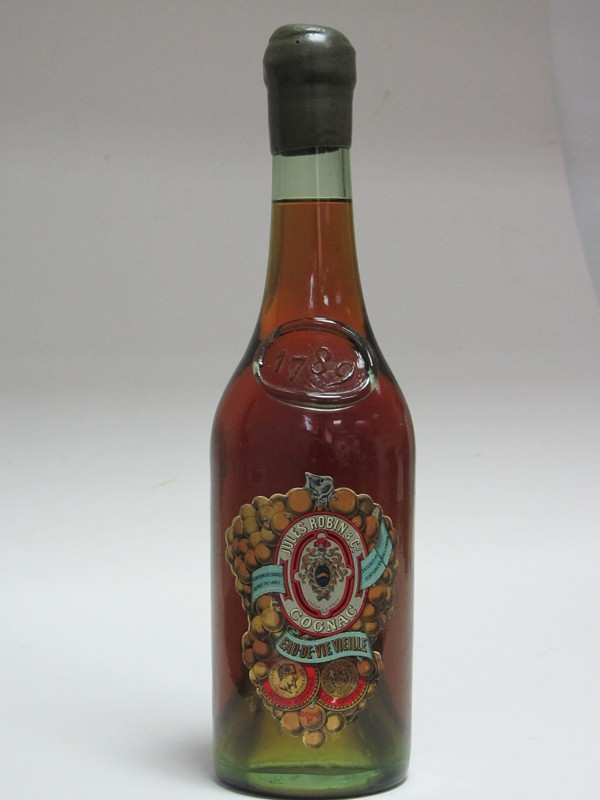
Above is a picture of a very old bottle of cognac from 1789. The cognac was bottled in the mid 19th century. The label is a wonderful example of the very first labels that appeared. On the website of Paul Ronne (www.cognac-paul.com) you can find many more beautiful examples. Jules Robin also used special age indications during this period that can be seen on the Paul Ronne site, such as P, OP, OOOOP, VVO and VXO and others.
Other (brand)names that are owned by Jules Robin or under which Jules Robin has sold cognac in the past:
- Briand
- Folligny
- Marquis de Salencon
- Ménage à Trois
- Trenais


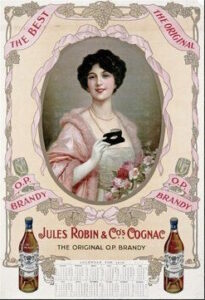
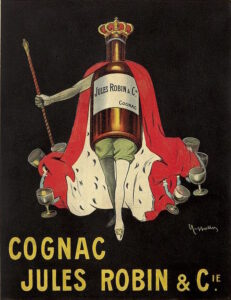
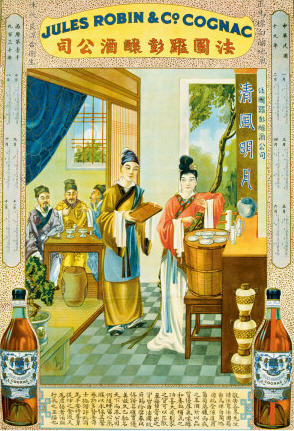
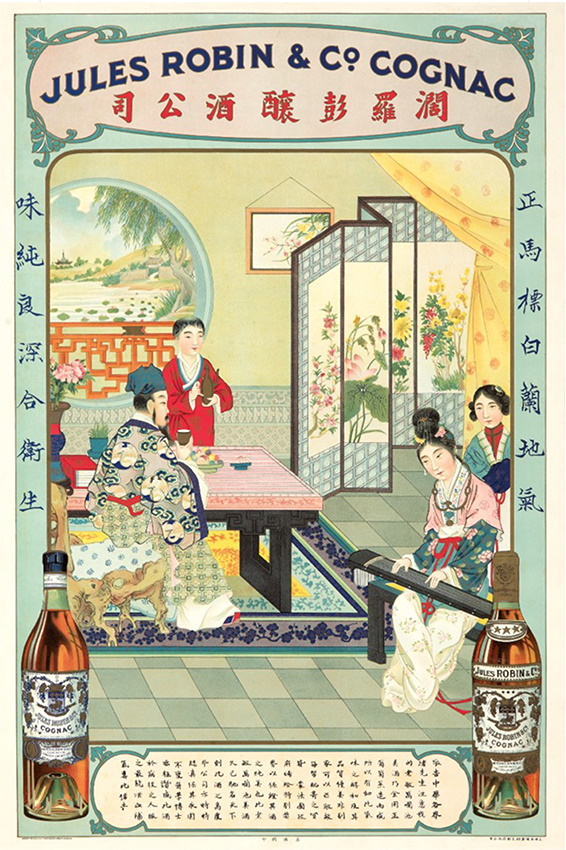
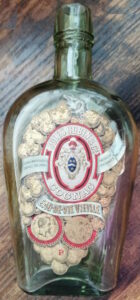




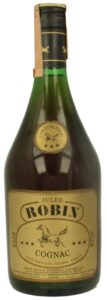







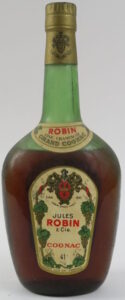

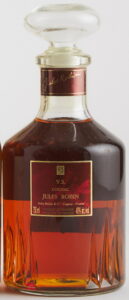
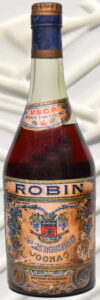

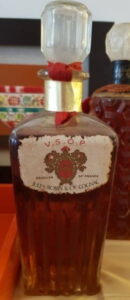
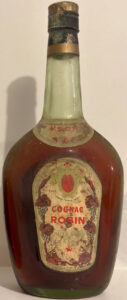



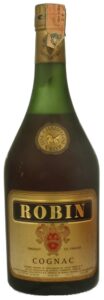




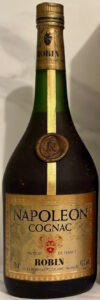



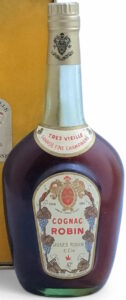


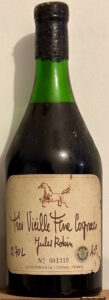





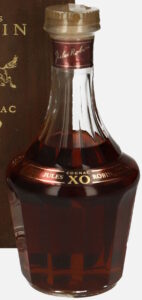
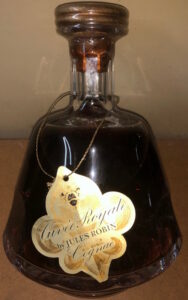
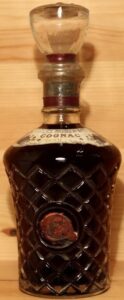
Dear Ton,I discovered your site and I’m thrilled: it’s the reference in this field. I collect old cognacs and not a day goes by that I don’t consult it.
Sincere admiration.
Phil from Saintes near Cognac
Thanks, always nice to get such feedback.
Ton
Any insight on this bottle?
Very sorry to say that I have never seen it before. But it is a very beautiful decanter. It says Grande Réserve, which is hard to interpret, but I am sure this decnater contains very old cognac. Judging by the label and the decorated glass I would think this was bottled in the 1960s.
I am not familiar with state stamps, but that could provide another clue.
I tried to find something about this tax stamp. Could be 1955, but I am not sure.
See here: Eric Jackson site
Oh, too bad… but thanks for the link to the stamp site. That’s interesting.
What do you mean by too bad? If you were to sell this bottle at auction it would bring a lot of money. Hard to estimate, but at least €300, at least with a good auction site like catawiki. My estimate would be €300-500.
Sorry… “too bad” just meant “too bad you weren’t able to provide more detailed information.” But I appreciate the response!
Hello.
I’ve come across at least 2 bottles like this over the past year. Perhaps this letter will add a little information to you. I agree that the cost is approximately 300-400 €. Your bottle does not have protective wax and this may be suspicious.
Best Regards Andrey.
Thank you very much for this additional information.
Greetings. I hope everything is fine with you) Please tell me what you know about this bottle? What era? Best Regards Andrey.
These labels were originally used between 1860 and 1865. But I don’t think this bottle is from that period. I would expect the heel to be deeper. Also, the cord is not from that period, nor is the waxed cap. The cap could have been renewed, but everything else points to a much later date. As is the filling level. My best guess would be 1970-80s.
I don’t agree with you about the time of use of “ribbons”… they have been used since 1811… look at the photographs… how are your statements confirmed?
Or this photo
Hello.
I can’t say for sure about the sealing wax on the neck, but regarding the ribbon and the bottle itself, I most likely agree with your assumption about 1860 – 1865.
Best Regards Andrey.
Can someone tell me if this is a genuine bottle? It is a magnum, label on the back is in English and French.
Best regards, Huub
Yes, this is a genuine bottle.
I found an old bottle can someone help me find out how much it’s worth and who can buy it
Please attach a photo.
Ton
Recently found this original labelled pocket flask….early machine mane glass World war 1 era….. its in fine condition and a welcome addition to the old Frend Cognac/Brandy bottle collection
Beautiful!